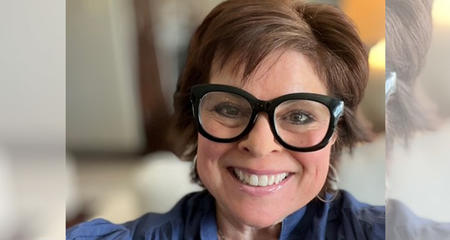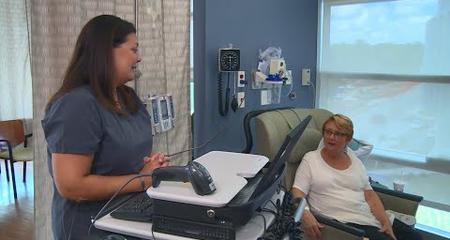The Brain and Spine Tumor Program is actively involved in clinical trials of new drugs and other therapies. These trials give many patients access to advanced treatments.
View All Brain and Spine Cancer Clinical Trials
One reason brain tumors are so hard to treat and cure is that standard imaging doesn’t clearly show what is tumor tissue and what is not. Being able to accurately tell the difference between the two could be a game-changer in brain tumor treatment.
To meet that challenge, the Brain and Spine Tumor Program includes an internationally known team of biophysicists who are constantly working behind the scenes using physics, engineering and clinical resources. Their sole focus is to design more sophisticated imaging techniques that more accurately diagnose and monitor brain tumors. Our biophysicists are active members of U.S. and international consortiums helping collect data to guide diagnostics and treatment.
These researchers work directly with doctors in the weekly Froedtert & MCW brain tumor board meeting where they discuss different ways of imaging tumors, and techniques that fit patient treatment needs. Together, they are bringing techniques like those below into standard practice – from an idea in a lab right to the patient. Here are examples of research that resulted in techniques now used in standard practice, as well as techniques still in development.
Relative Cerebral Blood Volume
Relative cerebral blood volume (rCBV), a measurement obtained from MR perfusion imaging, is a way to get information about brain tumor biology that can’t be "seen" with standard imaging. Standard MRI shows bright spots that could represent tumor tissue. After treatmaent, however, they might also represent the effects of treatment on non-tumor tissue. While standard MRI cannot always distinguish tumor from treated tissue, MR perfusion often can make the distinction.
Tumors need a steady supply of blood to feed their growth. rCBV not only shows the bright spots but also defines them by showing areas that are gaining blood volume. Brain tissue that does not contain tumor doesn’t require a large volume of blood. This technique helps doctors determine whether or not the tumor is responding to treatment or spreading and growing aggressively. Through years of research and development, the MCW biophysics team gathered enough data to show rCBV is a consistently effective tool. It is now a clinical standard.
Delta T1 Mapping
Delta T1 mapping, which has also become a clinical standard, is a technique using a type of image (T1) that is very sensitive to the increased brightness that might occur after administering the MRI contrast agent. Because brain tumors cause a break-down of the blood/brain barrier (the protective “net” that covers the brain), tumors absorb more dye and appear brighter than normal tissue.
However, when the increased brightness is subtle due to treatment or when there is bright signal even before giving contrast agent, interpretation of the images can be more challenging. The dT1 method overcomes these challenges by quantifying the images to make areas of true enhancement much more visible.
Fractional Tumor Burden Mapping
Fractional tumor burden (FTB) mapping combines information from rCBV and Delta T1 mapping. Used together, these combined techniques even more accurately define what is tumor and what could be the result of treatment (such as inflammation). Fractional tumor burden mapping could eventually offer even more specific information about how a brain tumor is responding to treatment or if different or more treatment is needed. This mapping technique has already proven to be effective in determining treatment for high-grade (more advanced) brain tumors, but more research data is needed before it becomes a standard clinical tool.
Brain Tumor Infiltration Imaging
One reason that brain tumors are difficult to cure is that standard imaging is not yet capable of showing where tumors might be infiltrating into areas outside of the contrast-enhancing areas. That infiltration process is silent and invisible with standard imaging. MCW biophysicists are designing a technique to solve this problem by combining different types of MRI technology with artificial intelligence. This promising method, if successful, could be a game-changer in terms of giving doctors a complete picture of where brain tumor tissue is and isn’t. Although more work is needed, initial results look promising.
Virtual Visits Are Available
Safe and convenient virtual visits by video let you get the care you need via a mobile device, tablet or computer wherever you are. We’ll gather your medical records for you and get our experts’ input so we can offer treatment options without an in-person visit. To schedule a virtual visit, call 1-866-680-0505.
More to Explore





